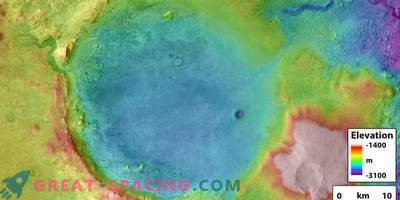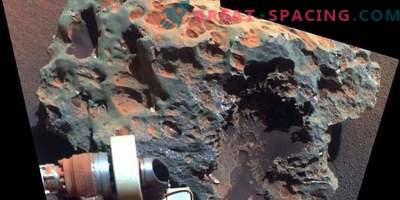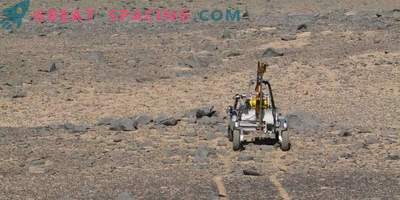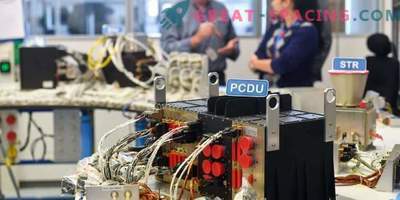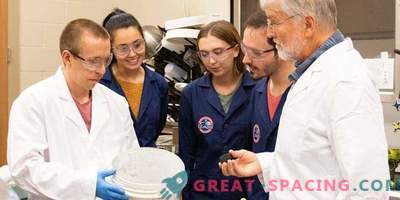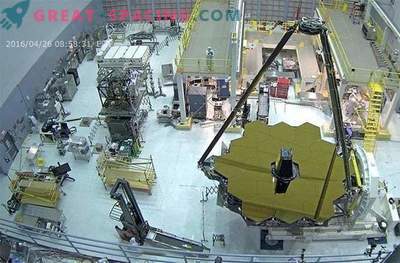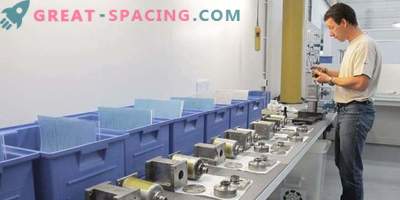
A robot that can simulate the slopes of steep cliffs will one day help explore Mars and find signs of life.
Recent experiments with the Cliffbot robot climber have shown that he is able to explore the most difficult places that astronauts are not able to reach, although it requires modernization to overcome the most difficult obstacles.
The ravines and canyons with steep cliffs are observed across Mars. Ancient water channels cut through many valleys on the Red Planet, suggesting that water once flowed on the surface of Mars, which is now a dry and dusty world.
The likelihood that water once flowed on Mars increases the chances that life could exist on the planet or possibly still exist there, hiding in underground reservoirs. Liquid water, as we know, is an important element for life, and life exists wherever there is liquid water.

The same mountaineer robot Cliffbot
To trace the history of Mars on the availability of life, scientists would like to learn more about the past of the planet. On Earth, researchers often resort to excavation - older material is usually located at great depths. However, excavations on Mars are not easily accessible, since this requires heavy equipment that is not easy to send to another planet.
Instead of excavating with the help of astronauts or robots, scientists want to explore the natural ravines and canyons of the Red Planet, where rock layers can be viewed. A robot that can model the slopes of the cliffs will help unlock the key to Martian history. In a sense, the deeper we dive, the further we look into the past of the Red Planet. Since 2001, the Planète Mars (French Martian community) has been experimenting with probes capable of descending down steep cliffs on special cables. The goal is for astronauts to manually control the Cliff or Cliffbot reconnaissance vehicle using cameras and other scientific instruments aboard the robot to analyze complex hard-to-reach places.
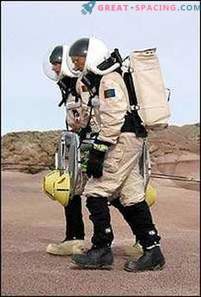
Alain Sushie and Derek Shannon with the robot Cliffbot
The last series of Cliffbot trials was conducted as part of the MARS2013 project of the Austrian Space Forum in February 2013. Studies were carried out in the Moroccan desert, where the geology and topography of the Sahara is similar to Mars.
Cliffbot was driven by operators who were wearing Aouda.X spacesuits, designed to demonstrate that an astronaut in a real spacesuit is able to control a Mars vehicle. Although the Aouda.X spacesuit is not completely airtight like a real spacesuit, it can imitate many of the main movement restrictions that astronauts on Mars will have.
Scientists have experimented with Cliffboth on higher cliffs than ever before (the robot was previously tested on cliffs less than 59 feet, or 18 meters tall). They managed to lower the Cliffbot on a cable 150 feet (46 m) in length.
The wide-angle high-definition camera mounted on Cliffbot was able to transmit photos of numerous fossil basins located in Moroccan rocks, suggesting that the robot could help astronauts identify any similar anomalous features on Mars.
"An important consequence of the Cliffbot experiments was the demonstration that we could replace the drill on Mars using a robot capable of descending the mountainside," said study author Alain Souchier, mechanical engineer, president of the Planète Mars Association in Vernon, France. However, the robot had some problems during the tests. In one case, the operators were unable to lower the Cliffbot down the slope, since a boulder 15.7 inches (40 centimeters) was wedged in between the right-hand drive and the spokes. One way to solve this problem in the future is to use solid rings without spokes.
In addition, the scientists placed the camera on the back of Cliffbot and she helped the operators to view the surroundings. However, when the stone was stuck between the spokes of the robot, the operators could not see the problem. Scientists have suggested that in the future they may add cameras aimed at the wheels to identify such problems.
"These changes are technically quite easy to implement," said Sukhiye.
The researchers noted that Cliffbot in the future could perform the same kinds of scientific experiments that other rovers did. For example, it may bring with it a detector of methane, an organic gas, the existence of which may indirectly indicate the existence of life on Mars. Another useful tool may be the L.I.F.E. laser, which can detect other molecules, such as chlorophyll, which are potential signs of life.
Further experiments with Cliffbot are planned for 2015 in Utah.



